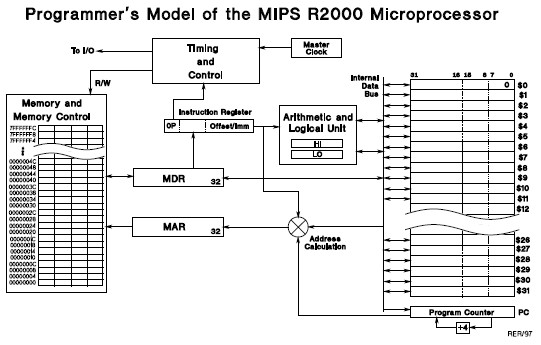Earlier versions of Spim implemented the MIPS-I instruction set used on the MIPS R2000/R3000 computers. MARS and Spim now support the more modern MIPS32 architecture, which is the MIPS-I instruction set augmented with a large number of occasionally useful instructions.
| R2000 is obsolete now, but has never been surpassed for its simplicity and elegance. The programmer’s model of MIPS R2000 is shown on the right. |

|
- It has 32 general-purpose registers,
$0...$31. - PC (program counter), which contains the address of the current machine instruction
- Instruction register, which stores the instruction currently being executed
- MAR (memory address register), which holds the address of the memory location where the next instruction is to be executed
- MDR (memory data register), which contains the data to be stored in the computer storage (e.g., RAM), or the data after a fetch from the computer storage. It acts like a buffer and holds anything that is copied from the memory ready for the processor to use it.
|
Let me just put my face on (apply cosmetics), and I’ll meet you at the restaurant in 15 minutes. |